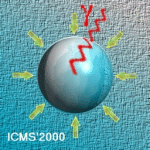
ICMS'2000
The International Conference on Multiphase Systems, ICMS'2000
Ufa, RUSSIA, June 15-17, 2000
Shreiber I.
Department of Chemical Engineering, Ben-Gurion University of the Negev, Be'er-Sheva, Israel
Here some application of foams are listed: explosive and combustible compositions; minefield clearing; artillery; camouflage (false rubber targets, green forest simulation); antennas; long and superlong e/m waves; lifting sunken ships; covering radioactive areas; solidification of r/a slurry; decrease of radiation; agriculture (reduced water consumption in dryland agriculture, artificial afforestation, weed growth elimination); building; new materials; retaining heat in dwellings; pipe in-sulation; antiknock system for fuel; protection of air-strip construction sites from sunrays; technology of permafrost building. We must also underline the most important application of the foams - to control ecological catastrophes (oil spillage absorption, restoration of the green cover in tundra, antidusting treatment). These applications are based on the unique properties of foams which can be utilized: high foam flow resistance; ability to cure immedi-ately on addition of acids; retain moisture in sand and soils; suspend particles and keep them in the foam. One of the central problems of polymeric foam application is control of the process of resin curing and polymeric foam formation. In fact this process goes on due to the competition between two processes: curing and liquid drainage. Another problem of foam application is to design machines for large-scale foam generation. This problem needs developing gas-dynamic methods for foamed flow description. Foams have low values of sound wave propagation and we began to study the prob-lem using our experience in bubbly liquid modeling.